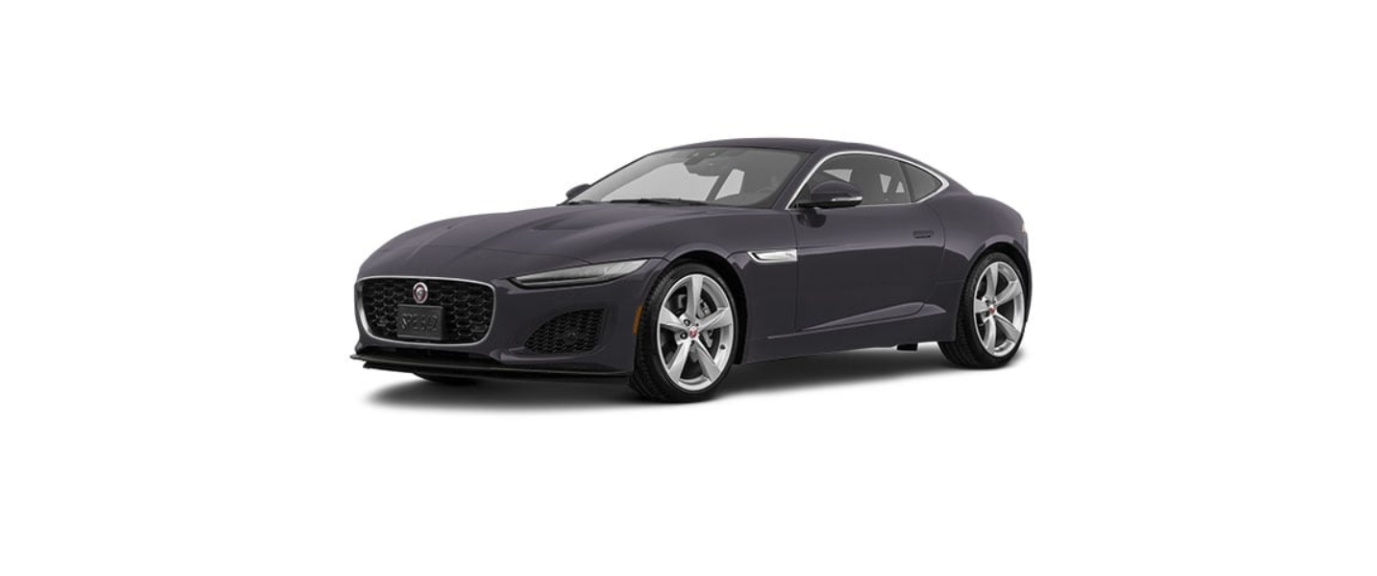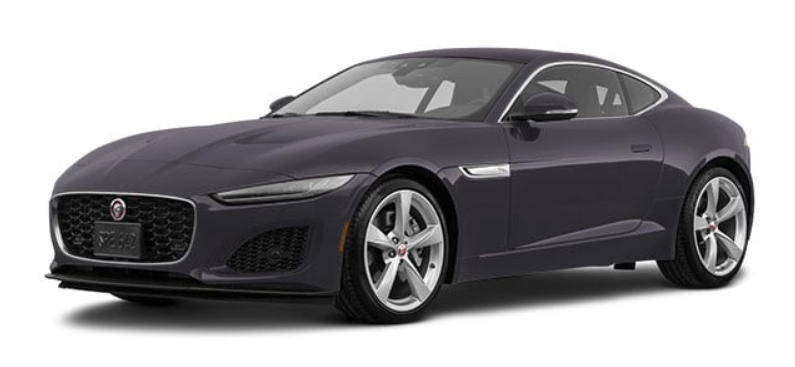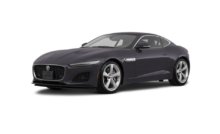2022 Jaguar F-TYPE Fuel And Refueling Owners Manual




2022 Jaguar F-TYPE Fuel And Refueling


SAFETY PRECAUTIONS
Make sure that all the warnings listed below have been read and understood. Failure to observe the warnings may cause a fire or explosion, potentially resulting in serious injury or death.
Do not smoke, use an exposed flame, or cause sparks while refueling.
Avoid exposing the fuel gases to any potential sources of ignition.
Switch off the engine when refueling, as it is both a source of extreme temperature and electrical sparks.
When refueling, switch off any personal electronic devices such as cell phones or music players.
Do not overfill the fuel tank, as this may cause spillage when the vehicle is driven. Spillage may also occur if the fuel expands in high ambient temperatures.
Only use containers specifically designed for carrying fuel and always remove them from the vehicle to fill them.
GASOLINE ENGINED VEHICLES
Use high-quality fuel with detergent. Low-quality fuel can damage the engine and reduce engine performance.
Do not use leaded fuels, fuels with lead substitutes, e.g., manganese-based, or fuel additives. The vehicle’s emission control systems can be adversely affected, which may affect the vehicle’s warranty coverage.
Fuel system cleaning agents should not be used unless approved by the vehicle manufacturer. Inadequate cleaning agents may damage the fuel system.
OCTANE RATING
Federal law requires that gasoline octane ratings be posted on the pumps. The vehicle manufacturer recommends the use of premium unleaded gasoline with a minimum octane rating of 91 AKI (Anti-Knock Index). Using the correct fuel specification helps to maintain the vehicle’s performance, fuel economy, and driveability. If premium unleaded fuel is not available, use unleaded fuel with a lower octane rating, down to a minimum of 87 AKI. Using a lower specification fuel may reduce the vehicle’s performance, increase fuel consumption, and can cause an audible engine knock and other driveability problems.
Do not use fuels with an octane rating lower than 87 AKI, as severe engine damage may occur. Consult a retailer/authorized repairer if an engine knock is detected while holding a steady speed on level roads. Also consult a retailer/authorized repairer if a heavy persistent engine knock is detected, even if using fuel to the recommended octane rating. Failure to do so is a misuse of the vehicle, which is not covered by the vehicle’s warranty.
Occasional light engine knock experienced while accelerating or climbing hills, is acceptable.
Do not use leaded fuels, fuels with lead substitutes, e.g., manganese-based or fuel additives. Doing so may adversely affect the vehicle’s emission control systems and affect the vehicle’s warranty.
ETHANOL
The vehicle is not suitable for use with fuels containing more than 15% ethanol.
Do not use E85 fuels. Fuels with 85% ethanol content may cause serious engine and fuel system damage. Fuels containing up to 15% ethanol, such as E10 and E15, may be used. Make sure that the fuel has octane ratings no lower than those recommended for unleaded fuel. Most drivers do not notice any operating difference with fuel containing ethanol. If driveability issues are experienced, revert to fuel containing no more than 10% ethanol. If the issues remain, use premium quality unleaded fuel instead.
METHANOL
Wherever possible, avoid using fuel containing methanol. Using fuel containing methanol may cause serious engine and fuel system damage, which is not covered by the vehicle’s warranty.
METHYL TERTIARY BUTYL ETHER (MTBE)
Unleaded fuel containing an oxygenate known as Methyl Tertiary Butyl Ether (MTBE) can be used. The ratio of MTBE to conventional fuel must not exceed 15%. MTBE is an ether-based compound derived from gasoline. MTBE has been specified by several refiners as the substance to enhance the octane rating of the fuel.
REFORMULATED GASOLINE
Reformulated gasoline is specially formulated to help further reduce the vehicle’s exhaust emissions. The vehicle manufacturer fully supports all efforts to protect and maintain the ambient air quality and encourages the use of reformulated gasoline, where available.
RUNNING OUT OF FUEL
Avoid running out of fuel. Doing so can cause damage to the vehicle’s engine, fuel, and emission control systems. If the vehicle does run out of fuel, a minimum of 1.4 U.S. gallons (5 L) is required to restart the engine. The vehicle should be left with the ignition on for 5 minutes after refueling, before attempting to restart the engine. The vehicle needs to be driven 1 to 3 miles (1.6 to 5 km) in order to reset the engine management and monitoring systems.
If the vehicle does run out of fuel, seeking qualified assistance is advisable.
FUEL FILLER FLAP
Take note of all warnings and instructions given on the label affixed to the inside of the fuel filler flap. Failing to do so may lead to a fire or explosion, resulting in serious injury or death.
To operate the fuel filler flap, proceed as follows:
- Press and release the rear of the fuel filler flap to unlatch.
- Pull the flap open. The label on the inside of the flap indicates the correct fuel for the vehicle.
- Twist the cap counterclockwise to undo it.
- Store the cap on the lip provided on the top of the hinge arm, as shown.
When replacing the cap, turn it clockwise until the ratchet clicks.
To close the filler flap, push the flap until it is securely latched.
FUEL FILLER
Make sure the relevant safety warnings and cautions have been read and understood before operating the fuel filler. See SAFETY PRECAUTIONS.
Take note of all warnings and instructions given on the label affixed to the inside of the fuel filler flap.
When refueling, make sure that all of the windows, doors, and sunroof are fully closed. Use extreme care and caution if young children or animals are in the vehicle. Failure to do so may result in injury or death.
Do not attempt to fill the fuel tank past its maximum capacity. If the vehicle is parked on a slope, or in direct sunlight or high ambient temperatures, expansion of the fuel can cause spillage. An accidental fuel spillage can lead to a fire or explosion, potentially resulting in serious injury or death.
Make sure that the fuel filler nozzle is fully inserted into the filler neck. If the nozzle is inserted loosely, fuel spillage may occur. An accidental fuel spillage can potentially lead to a fire or explosion, resulting in serious injury or death.
Never leave the fuel pump nozzle unattended while refueling. Doing so may result in fuel spillage. An accidental fuel spillage can potentially lead to a fire or explosion, resulting in serious injury or death.
Check the fuel pump information carefully to make sure that the correct fuel is used to refuel the vehicle. Inadequate fuel can reduce engine performance and may cause permanent damage to engine components.
If the vehicle is filled with incorrect fuel, it is essential to seek qualified assistance before starting the engine. Inadequate fuel can reduce engine performance and may cause permanent damage to engine components. Filling station pumps are equipped with automatic cut-off sensing to avoid fuel spillage. Fill the tank until the filler nozzle automatically cuts off the supply. Do not attempt to fill the tank beyond this point.
FUEL TANK CAPACITY
Avoid the risk of running out of fuel. Never intentionally drive the vehicle when the fuel gauge indicates that the tank is empty. When refueling the vehicle after the indicated range reads zero, it may not be possible to add the maximum fuel quantity. The fuel tank retains a small reserve of fuel. See CAPACITIES.
Recent Posts
VW Jetta Engine Fuse Box Diagram
Access the comprehensive 2010-2018 VW Jetta Passenger Fuse Box Diagram to troubleshoot electrical issues effectively.…
VW Jetta Passenger Fuse Box Diagram
Explore the comprehensive VW Jetta Passenger Fuse Box Diagram to troubleshoot electrical issues effectively. Understand…
2023 Ford F-150 Lightning Fuse Box Diagram
Under Hood Fuse Box Location Remove the front luggage compartment cover. Under Hood Fuse Box…
2022 Kawasaki NINJA H2 SX SE Brake Lever Adjuster Owner’s Manual
2022 Kawasaki NINJA H2 SX SE Brake Lever Adjuster Owner's Manual NOTICE Only adjust the front…
2023 Land Rover Range Rover Evoque Exiting The Vehicle Owners Manual
2023 Land Rover Range Rover Evoque Exiting The Vehicle SINGLE LOCKING WARNING Before exiting the…
2023 Land Rover Range Rover Evoque Front Seats Owners Manual
2023 Land Rover Range Rover Evoque Front Seats FRONT SEAT SAFETY Make sure to read…
